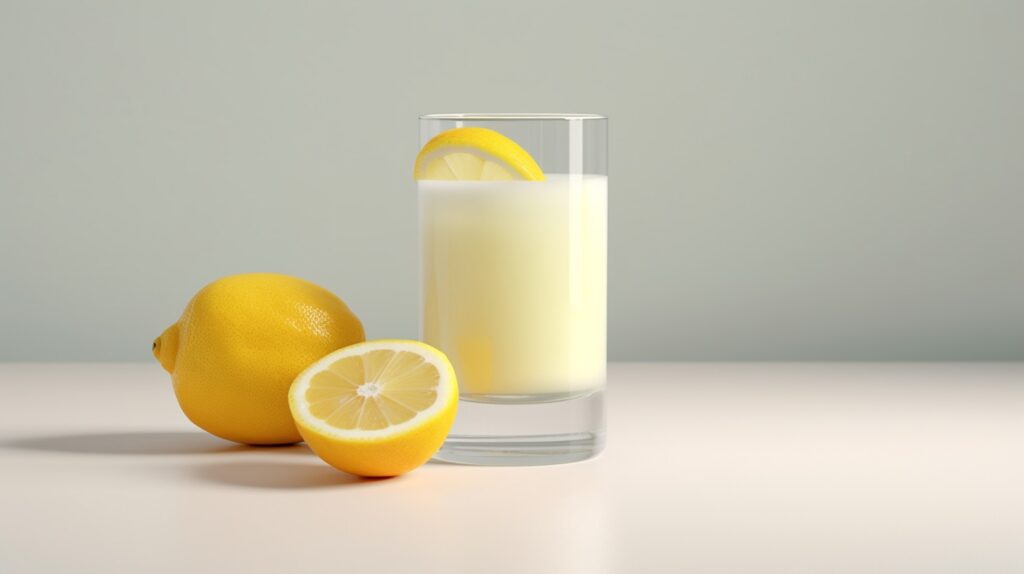Citric acid, also known as “sour salt,” is a common ingredient in the culinary world, and is often used in cooking and baking to add a tart, sour flavor. It’s also a key component in some food preservation methods due to its high acidity.
However, there may be times when you need a substitute for citric acid, whether it’s due to dietary restrictions, taste preferences, or simply because you’ve run out.
Two of the best alternatives are lemon juice and vinegar, both of which can deliver the tangy kick that citric acid offers.
👅 Flavor Profile
Citric acid has a tart, sour taste, akin to that of citrus fruits like lemons and limes, though it’s a bit more concentrated. It’s used in small quantities to enhance flavors, balance sweetness, and even act as a preservative.
The texture isn’t usually considered as it typically dissolves into the rest of the ingredients, leaving no significant residue or texture.
🔄 The Closest Replacements/Substitutes
Lemon Juice

Arguably the most suitable replacement, lemon juice provides the acidity needed for most recipes that call for citric acid. The ratio for substitution is 1/2 teaspoon of citric acid to 1 tablespoon of lemon juice.
- Taste and Texture: Lemon juice is similarly sour and tart but has a fruity undertone.
- Nutritional Comparison: Lemon juice contains Vitamin C, but also has more sugars.
- Price and Availability Comparison: Widely available and generally affordable.
Vinegar
While not as tangy as citric acid, vinegar provides a similar level of acidity. Use 1 teaspoon of vinegar for every 1/2 teaspoon of citric acid.
- Taste and Texture: Vinegar has a sharp, acidic taste but lacks the fruity undertone of citric acid.
- Nutritional Comparison: Vinegar contains minimal vitamins but has potential health benefits like improved digestion.
- Price and Availability Comparison: Widely available and affordable.
Lime Juice
Lime juice can be used in place of citric acid, especially in recipes where a citrus flavor is desirable. Use 1 tablespoon of lime juice for every 1/2 teaspoon of citric acid.
- Taste and Texture: Lime juice is tart, tangy, and more aromatic compared to citric acid.
- Nutritional Comparison: High in Vitamin C and other nutrients.
- Price and Availability Comparison: Widely available and generally affordable.
Orange or Pineapple Juice
For a milder flavor, orange or pineapple juice can be used. They bring added sweetness, so adjust your recipe accordingly. For every 1/2 teaspoon of citric acid, use 1 tablespoon of juice.
- Taste and Texture Comparison: These fruit juices are sweeter and less acidic than citric acid, but can provide a similar tartness.
- Nutritional Comparison: Both juices are rich in Vitamin C and contain other vitamins and minerals.
- Price and Availability Comparison: Readily available, though possibly more expensive than lemon or lime juice.
Sour Salt
Sour salt is actually pure citric acid and is used in canning and to add sour flavors to dishes. Use it in a 1:1 ratio with citric acid.
- Taste and Texture Comparison: Sour salt has a very similar taste and texture to citric acid, as it is essentially the same thing.
- Nutritional Comparison: Like citric acid, sour salt is calorie-free and adds no nutritional value to dishes.
- Price and Availability Comparison: Sour salt can be hard to find in traditional grocery stores but can be purchased online or in specialty food shops.
White Wine

In certain dishes, particularly those that are savory, white wine can make a suitable substitute. For every 1/4 teaspoon of citric acid, use 1 teaspoon of white wine.
- Taste and Texture Comparison: White wine offers a complex, less tangy flavor, with its acidity able to mimic that of citric acid.
- Nutritional Comparison: While it does contain small amounts of minerals and antioxidants, white wine’s nutritional content isn’t its main selling point.
- Price and Availability Comparison: Prices for white wine can vary drastically, but it is widely available.
Cream of Tartar
As a byproduct of wine and grape juice processing, cream of tartar is an acidic powder that can mimic citric acid in certain recipes. For every 1/4 teaspoon of citric acid, use 1/2 teaspoon of cream of tartar.
- Taste and Texture Comparison: Cream of tartar is slightly less sour than citric acid and offers a similar texture.
- Nutritional Comparison: Cream of tartar is high in potassium.
- Price and Availability Comparison: It is often found in the baking aisle of grocery stores and is relatively inexpensive.
⤵ Other Substitutes
Ascorbic Acid (Vitamin C)
Although not as strong as citric acid, ascorbic acid can replace it in a pinch. Use 1/2 teaspoon of ascorbic acid for every 1/4 teaspoon of citric acid.
- Taste and Texture: Ascorbic acid has a mild sour taste, not as potent as citric acid.
- Nutritional Comparison: Ascorbic acid is high in Vitamin C.
- Price and Availability Comparison: Can be found in health food stores, but may be more expensive.
Tamarind Paste
For a more unique substitute, tamarind paste offers a sweet-sour flavor. For every 1/2 teaspoon of citric acid, use 2 tablespoons of tamarind paste.
- Taste and Texture: Tamarind paste is tangy and sweet, but with a unique flavor profile.
- Nutritional Comparison: Tamarind paste contains a good amount of Vitamin C, potassium, and dietary fiber.
- Price and Availability Comparison: Less common in regular grocery stores but can be found in Asian or Indian markets.
Sour Cream or Yogurt
In baking, a tangy dairy product like sour cream or yogurt can be used as a substitute. Use the same amount as the recipe calls for citric acid.
- Taste and Texture: Sour cream and yogurt have a creamy texture and tangy flavor.
- Nutritional Comparison: Both contain probiotics and are high in protein.
- Price and Availability Comparison: Widely available and affordable.
🔪 How to Use Citric Acid Substitutes in Recipes
In Preserves and Jams
Lemon juice or vinegar can be used to maintain the color and increase the shelf life of preserves and jams. It provides the acidity required for preservation.
In Baking
For baking recipes that call for citric acid, a sour dairy product like yogurt or sour cream can be used. It helps in activating the baking soda, giving your baked goods the desired rise.
In Soups and Sauces
Citrus juices like lemon or lime juice can be used as a citric acid substitute in soups and sauces. They help in balancing the flavors and adding a bit of tanginess.
In Beverages
Tamarind paste or lime juice can be used to substitute citric acid in beverages, giving them a tart, refreshing taste.
In Marinades
Vinegar or lemon juice can be used as a citric acid substitute in marinades, aiding in tenderizing the meat and adding flavor.
💡 Tips and Guidance
- When substituting citric acid, always start with less of the substitute and adjust according to taste.
- Remember that citric acid is stronger in flavor than most of its substitutes, so you may need to use more of the substitute to achieve the desired tanginess.
- If using a liquid substitute like lemon juice or vinegar, consider the extra liquid in your recipe and adjust other ingredients if necessary.
- Substitutes like tamarind paste have a unique flavor and may change the overall taste of your dish, so use them judiciously.
- While dairy products like yogurt and sour cream can be used in baking, they may not be suitable for other recipes due to their creaminess and different flavor profile.
